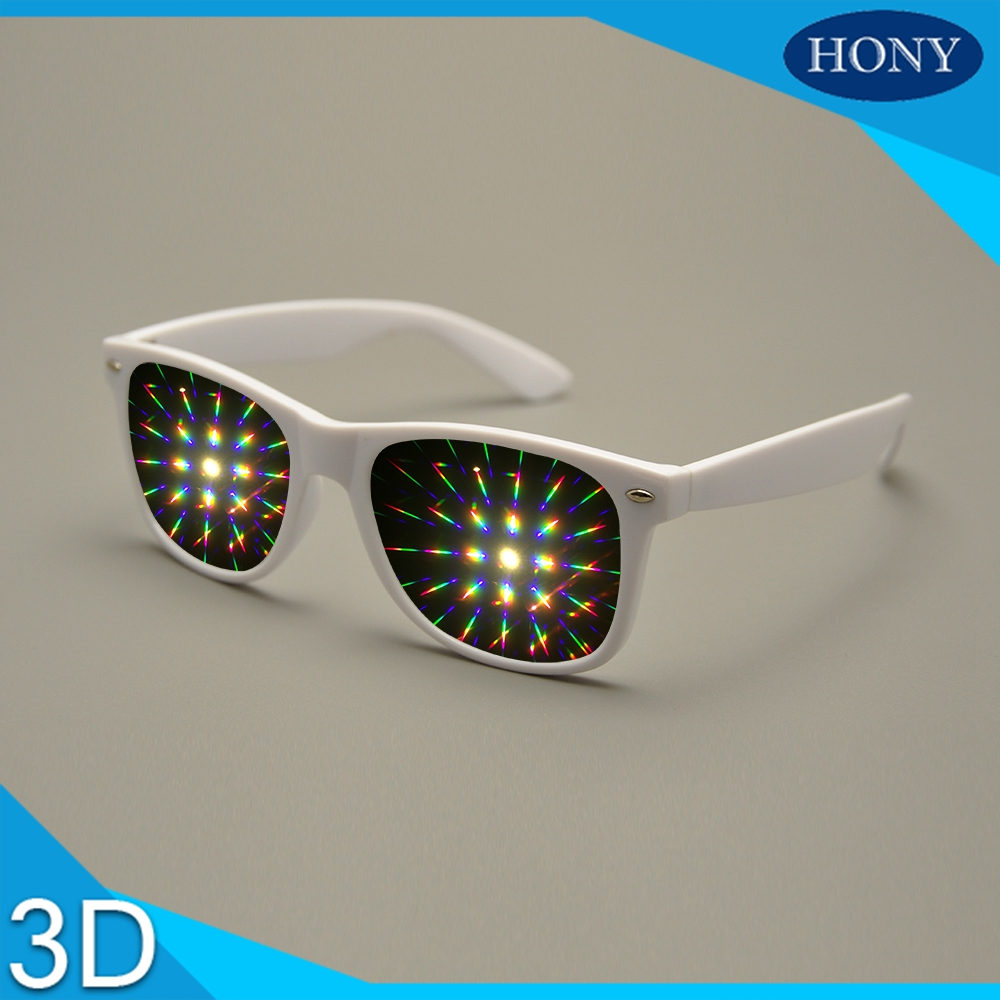

The light still bends through the prisms in the suncatcher, creating a dazzling explosion of rainbows, but it throws off different patterns and your student may notice stronger or weaker color reflections.Ī Day of Observation for Diffraction Grating Hanging a suncatcher outside when the sun is bright shows a different effect. You still get to play with a suncatcher, but this time, your budding scientist can view the magic in an open, natural setting.
#Plastic diffraction glasses how to#
Show him or her how to hang the suncatcher on a window or in a window frame that gets the full light of the sun.Īll he or she has to do is sit back, relax, and observe the technicolor patterns of light thrown by the prism. To observe the way sunlight diffracts and separates through a prism, all your student needs is a suncatcher, a window, and a little bit of sunlight. Ī suncatcher may seem like a pretty little knickknack, but it’s much more than that in the world of science and physics. Specifically, he or she should describe how it’s different from-or similar to-the way light shines and separates through a prism. Ideally, the light will shine through the glasses, become diffracted, and reflect on the screen.Īsk her to observe the pattern of lines. Now, he or she is ready to shine the light source behind the glasses. a few binder clips (to hold the glasses in place)Īt a table or another surface, a couple of meters away from the projector screen or wall, instruct your student to clip the binder clips to the glasses to hold them steady.Īt a point between the glasses and the wall (or screen), your young physicist should position the piece of colored plastic.a pair of 1000 line/millimeter diffraction grating glasses.a clean white wall or a projection screen.In this activity, your student needs to write down his or her observations. Teaching your student about diffraction on a higher level can be fun for both of you. If you choose to do this experiment with a small flashlight with the cover removed, then your student can hold the flashlight close to his or her face and rotate it while staring through the glasses. Putting on the glasses will show your child how light bends in a different way.

For this experiment, 500 line/millimeter glasses will do just fine. The edges of the blobs will be blue and red, but the blue edges will appear closer to the candle flame. They spread further away from each other, as well. When your child makes the slit between pencils even smaller, those dots grow into bigger blobs of light.

It travels in waves, although the human eye can’t pick up on it-most of the time, anyway.Īny time light slips through a narrow pinpoint, it spreads. A Day of Observation for Diffraction GratingĪmazing Ways to Get Your Kids Excited About Scienceĭid you know that light doesn’t travel in a straight line?.Just a Simple Candle Trick to Introduce Light Diffraction.



 0 kommentar(er)
0 kommentar(er)
